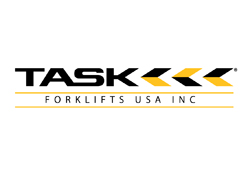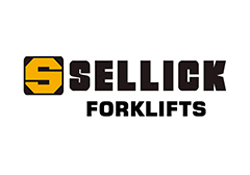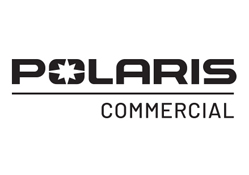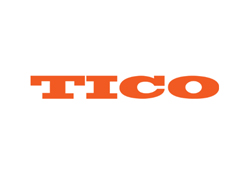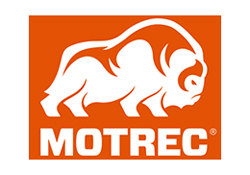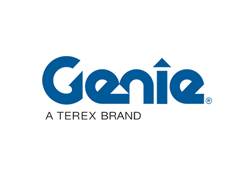Revolutionizing Manufacturing: Innovative Applications of Stamping Sheet Metal in Modern Industries
In recent years, the manufacturing industry has witnessed a transformative shift with the innovative applications of Stamping Sheet Metal, leading to enhanced efficiency and productivity. According to a report by MarketsandMarkets, the global sheet metal fabrication market is projected to reach $244.4 billion by 2026, driven by the growing demand for precision components in various sectors, including automotive, aerospace, and electronics. Stamping Sheet Metal processes have become increasingly relevant as they offer superior accuracy, reduced waste, and lower operational costs. By leveraging advanced technologies such as automation and robotics, manufacturers are finding new ways to streamline production lines and improve product quality. These developments are not only revolutionizing traditional practices but also setting the stage for future innovations in modern industries, making Stamping Sheet Metal applications a critical focus for professionals aiming to stay competitive in a rapidly evolving market.
Innovative Techniques for Enhancing Stamping Sheet Metal Efficiency in Manufacturing
In modern manufacturing, enhancing the efficiency of stamping sheet metal has become a crucial focus for industries aiming to reduce costs and improve productivity. According to a report by MarketsandMarkets, the global sheet metal market is projected to reach $290 billion by 2025, indicating a growing demand for innovative techniques in this sector. Techniques such as progressive die stamping and servo press technology are leading the charge in maximizing output while minimizing waste. Progressive die stamping not only streamlines the part production process but also reduces the number of operations required, which can significantly lower labor costs.
Moreover, advancements in automation and Industry 4.0 technologies are revolutionizing how stamping operations are executed. For instance, the implementation of smart sensors and data analytics in real-time monitoring helps identify inefficiencies and predict maintenance needs, thereby reducing downtime. A report by Grand View Research highlighted that the global automation industry in manufacturing is expected to grow at a CAGR of over 9% from 2021 to 2028, emphasizing the critical role of automation in enhancing stamping efficiency. By adopting these innovative practices, manufacturers can achieve a competitive edge in an increasingly demanding market.
Revolutionizing Manufacturing: Efficiency of Stamping Sheet Metal Techniques
Exploring the Impact of Automation on Sheet Metal Stamping Processes
The landscape of sheet metal stamping is undergoing a significant transformation due to advancements in automation. According to a report by Research and Markets, the global sheet metal market is expected to reach $265.15 billion by 2026, driven by the increased demand for precision manufacturing and the implementation of automated systems. Automation streamlines the stamping process, enhancing efficiency and accuracy while reducing production times and costs. Companies that integrate automated stamping machinery can achieve up to a 40% increase in productivity, showcasing the tangible benefits of this technological shift.
Tips: When considering automation in sheet metal stamping, assess the specific needs of your production environment. Investing in smart technologies such as AI-driven quality control systems can minimize errors and reduce waste, leading to significant long-term savings. Additionally, modern automation solutions often provide real-time data analytics, enabling proactive decision-making and improved operational planning.
Furthermore, the impact of automation is reflected in labor dynamics within the industry. While there may be concerns about job displacement, automation also creates new roles focused on managing and maintaining advanced machinery. A study from the World Economic Forum predicts that by 2025, automation could displace 85 million jobs but also generate 97 million new ones across various sectors. As firms adapt to these changes, training and skills development will be crucial for the workforce to thrive in an increasingly automated manufacturing environment.
Leveraging Advanced Materials for Sustainable Stamping Solutions in Modern Industries
Innovative applications of stamping sheet metal are changing the landscape of manufacturing across various industries. A key focus is on leveraging advanced materials that enhance sustainability in stamping processes. For instance, the use of high-strength alloys and lightweight composites can reduce material waste by up to 30%, significantly lowering the carbon footprint of manufacturing operations. Reports from the World Economic Forum indicate that adopting such materials can drive a circular economy, where materials are continually reused and recycled.
In addition to material advancements, manufacturers are also investing in environmentally friendly stamping solutions. Techniques such as laser stamping and precision die-cutting not only improve production efficiency, but they also minimize energy consumption during manufacturing. Studies show that companies implementing these technologies have seen energy savings of 15-25%. Embracing these innovations not only aligns with sustainability goals but also meets the increasing demands of eco-conscious consumers.
Tips: When considering advanced materials for stamping, prioritize those with high recyclability and reduced environmental impact. Additionally, staying informed about the latest technological advancements in stamping processes can provide competitive advantages in both efficiency and sustainability. Implementing regular audits of material use can help identify opportunities for waste reduction and cost savings.
Case Studies of Cost Reduction through Lean Manufacturing in Sheet Metal Stamping
In the modern landscape of manufacturing, lean practices have become a cornerstone of operational efficiency, particularly in sheet metal stamping. A recent case study highlighted the transformative power of integrating punching and bending processes into a single-piece flow. This method not only streamlines production but also significantly reduces cycle times, enabling companies to respond faster to market demands. According to industry reports, manufacturers implementing lean strategies have observed up to a 30% reduction in operational costs, demonstrating the tangible benefits of efficiency-focused approaches.
Tips: One effective way to enhance lean initiatives is to regularly analyze workflow for bottlenecks. By utilizing lean tools such as value stream mapping, fabricators can identify waste and optimize processes seamlessly. Moreover, investing in cross-training employees ensures versatility and adaptability across job roles, fostering a culture of continuous improvement.
As manufacturers explore these innovative approaches, they are not merely cutting costs; they are also enhancing product quality and increasing overall output. Embracing lean principles alongside advanced stamping techniques can lead to sustained competitive advantages in the ever-evolving industrial sector. Companies reporting successful implementations of lean practices often highlight employee engagement and feedback mechanisms as critical drivers of improvement.
Future Trends: Integrating IoT and Smart Technologies in Sheet Metal Stamping Operations
The integration of IoT and smart technologies into sheet metal stamping operations is set to transform the manufacturing landscape significantly. As manufacturers increasingly recognize the importance of data-driven decision-making, advanced sensors and IoT devices are becoming essential in optimizing production processes. These technologies enhance operational efficiency by enabling real-time monitoring and predictive maintenance, reducing downtime and minimizing waste. For instance, smart sensors provide valuable insights that allow fabricators to adjust their processes dynamically, ensuring high-quality output while meeting the evolving demands of modern industries.
Looking ahead to 2025, the metal fabrication sector must adapt to emerging materials and technological advancements to maintain a competitive edge. The focus will likely shift toward innovative solutions that incorporate artificial intelligence and machine learning, enhancing production capabilities. As the market expands, the ability to harness smart technologies will not only streamline operations but also address challenges such as skill gaps within the workforce. By prioritizing investments in digital infrastructure, fabricators can better leverage these advancements, paving the way for a more agile and responsive manufacturing environment.
